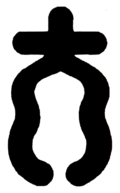Yakuza , also known as gokudō , are members of transnational organized crime syndicates originating in Japan. The Japanese police, and media by request of the police, call them bōryokudan groups”, while the yakuza call themselves ninkyō dantai (chivalrous organizations”). The English equivalent for the term yakuza is gangster, meaning an individual involved in a Mafia-like criminal organization. The yakuza are notorious for their strict codes of conduct, their organized fiefdom nature, and several unconventional ritual practices such as yubitsume, or amputation of the left little finger.Members are often described as males, wearing “sharp suits” with heavily tattooed bodies and slicked hair.This group is still regarded as being among “the most sophisticated and wealthiest criminal organizations. At their height, the yakuza maintained a large presence in the Japanese media and operated internationally. At their peak in the early 1960s, police estimated that the yakuza had a membership of more than 200,000. However, this number has drastically dropped, a decline attributed to changing market opportunities and several legal and social developments in Japan which discourage the growth of yakuza membership The yakuza still regularly engage in an array of criminal activities, and many Japanese citizens remain fearful of the threat these individuals pose to their safety. However, there remains no strict prohibition on yakuza membership in Japan today, although much legislation has been passed by the Japanese government aimed at increasing liability for criminal activities and impeding revenue
Yakuza have a complex organizational structure. There is an overall boss of the syndicate, the kumicho, and directly beneath him are the saiko komon (senior advisor) and so-honbucho (headquarters chief). The second in the chain of command is the wakagashira, who governs several gangs in a region with the help of a fuku-honbucho who is himself responsible for several gangs. The regional gangs themselves are governed by their local boss, the shateigashira. Each member’s connection is ranked by the hierarchy of sakazuki (sake sharing). Kumicho are at the top, and control various saikō-komon , senior advisors). The saikō-komon control their own turfs in different areas or cities. They have their own underlings, including other underbosses, advisors, accountants and enforcers.Those who have received sake from oyabun are part of the immediate family and ranked in terms of elder or younger brothers. However, each kobun, in turn, can offer sakazuki as oyabun to his underling to form an affiliated organisation, which might in turn form lower ranked organizations. In the Yamaguchi-gumi, which controls some 2,500 businesses and 500 Yakuza groups, there are fifth rank subsidiary organizations.
Here are the four principal syndicate of the whole Yakuza legacy.
Yamaguchi-gumi The Yamaguchi-gumi is the biggest Yakuza family, accounting for 30% of all Yakuza in Japan, with more than 8,900 members. From its headquarters in Kobe, it directs criminal activities throughout Japan. It is also involved in operations in Asia and the United States. Shinobu Tsukasa, also known as Kenichi Shinoda, is the Yamaguchi-gumi’s current oyabun. He follows an expansionist policy, and has increased operations in Tokyo (which has not traditionally been the territory of the Yamaguchi-gumi.) The Yamaguchi family is successful to the point where its name has become synonymous with Japanese organized crime in many parts of Asia outside Japan. Many Chinese or Korean persons who do not know the name “Yakuza” would know the name “Yamaguchi-gumi”, which is frequently portrayed in gangster films.

Sumiyoshi-kai
The Sumiyoshi-kai is the second largest Yakuza family, with an estimated 4,500 members. Sumiyoshi-kai is a confederation of smaller Yakuza groups. Its current head ( kai-cho) is Isao Seki. Structurally, Sumiyoshi-kai differs from its principal rival, the Yamaguchi-gumi, in that it functions like a federation. The chain of command is more relaxed, and its leadership is distributed among several other members.

Inagawa-kai

The Inagawa-kai is the third largest Yakuza family in Japan, with roughly 3,400 members. It is based in the Tokyo-Yokohama area and was one of the first Yakuza families to expand its operations outside of Japan.
Aizukotetsu-kai

The Aizukotetsu-kai is the fourth largest Yakuza family in Japan. Rather than a stand-alone gang, the Aizukotetsu-kai is a federation of approximately 100 of Kyoto’s various Yakuza groups. Its name comes from the Aizu region, “Kotetsu”, a type of Japanese sword. Its main base is in Kyoto.

